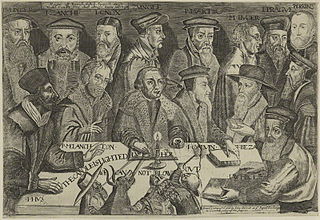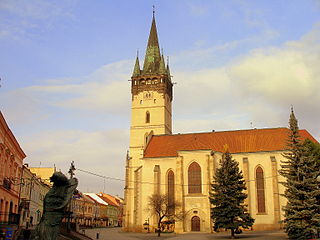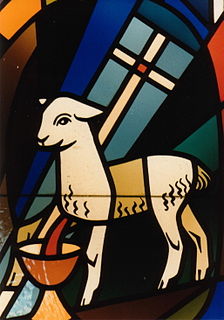
The history of Christianity concerns the Christian religion, Christian countries, and the Church with its various denominations, from the 1st century to the present.

The Reformation was a major movement within Western Christianity in 16th-century Europe that posed a religious and political challenge to the Catholic Church and in particular to papal authority, arising from what were perceived to be errors, abuses, and discrepancies by the Catholic Church. The Reformation was the start of Protestantism and the split of the Western Church into Protestantism and what is now the Roman Catholic Church. It is also considered one of the events that signify the end of the Middle Ages and beginning of Early modern period in Europe.

Early modern Europe is the period of European history between the end of the Middle Ages and the beginning of the Industrial Revolution, roughly the late 15th century to the late 18th century. Historians variously mark the beginning of the early modern period with the invention of moveable type printing in the 1450s, the Fall of Constantinople and end of the Hundred Years’ War in 1453, the end of the Wars of the Roses in 1487, the beginning of the High Renaissance in Italy in the 1490s, the end of the Reconquista and subsequent voyages of Christopher Columbus to the Americas in 1492, or the start of the Protestant Reformation in 1517. The precise dates of its end point also vary and are usually linked with either the start of the French Revolution in 1789 or with the more vaguely defined beginning of the Industrial Revolution in late 18th century England.

A Christian denomination is a distinct religious body within Christianity that comprises all church congregations of the same kind, identifiable by traits such as a name, peculiar history, organization, leadership, theological doctrine, worship style and sometimes a founder. It is a secular and neutral term, generally used to denote any established Christian church. Unlike a cult or sect, a denomination is usually seen as part of the Christian religious mainstream. Most Christian denominations self-describe as Churches, whereas some newer ones tend to use the terms churches, assemblies, fellowships, etc., interchangeably. Divisions between one group and another are defined by authority and doctrine; issues such as the nature of Jesus, the authority of apostolic succession, biblical hermeneutics, theology, ecclesiology, eschatology, and papal primacy may separate one denomination from another. Groups of denominations—often sharing broadly similar beliefs, practices, and historical ties—are sometimes known as "branches of Christianity". These branches differ in many ways, especially through differences in practices and belief.

The Radical Reformation represented a response to corruption both in the Catholic Church and in the expanding Magisterial Protestant movement led by Martin Luther and many others. Beginning in Germany and Switzerland in the 16th century, the Radical Reformation gave birth to many radical Protestant groups throughout Europe. The term covers radical reformers like Thomas Müntzer and Andreas Karlstadt, the Zwickau prophets, and Anabaptist groups like the Hutterites and the Mennonites.
Protestantism originated from the Protestation at Speyer in 1529, where the nobility protested against enforcement of the Edict of Worms which subjected advocates of Lutheranism to forfeiture of all of their property. However, the theological underpinnings go back much further, as Protestant theologians of the time cited both Church Fathers and the Apostles to justify their choices and formulations. The earliest origin of Protestantism is controversial; with some Protestants today claiming origin back to groups in the early church deemed heretical such as the Montanists.

The term Evangelical Catholic is used in Lutheranism, alongside the term Augsburg Catholic, with those calling themselves Evangelical Catholic Lutherans or Lutherans of Evangelical Catholic churchmanship stressing the catholicity of historic Lutheranism in liturgy, beliefs, practices, and doctrines. Evangelical Catholics teach that Lutheranism at its core "is deeply and fundamentally catholic". The majority of Evangelical Catholic Lutheran clergy and parishes are members of mainstream Lutheran denominations.

High church Lutheranism is a movement that began in 20th-century Europe and emphasizes worship practices and doctrines that are similar to those found within both Roman Catholicism and Eastern Orthodoxy and the Anglo-Catholic wing of Anglicanism. In the more general usage of the term, it describes the general high church characteristics of Lutheranism in the Nordic countries such as Sweden, Finland, and the Baltics. The mentioned countries, once a part of the Swedish Empire, have more markedly preserved Catholic traditions.

Christianity is the predominant religion in Austria. At the 2001 census, 73.6% of the country's population was Catholic. As of 2018, the number of Catholics has dropped to 56.9% of the population, according to data provided by the Austrian Catholic Church itself. There is a much smaller group of Evangelicals, totalling about 4.7% of the population in 2001, shrunk to 3.3% in 2018. Since 2001, these two historically dominant religious groups in Austria recorded losses in the number of adherents. The Catholic Church reported an absolute drop of 15.7%, the Evangelical Lutheran and Evangelical Reformed churches of 1.3%. In relative numbers the losses of the smaller Evangelical churches account for 33.7%, compared to Catholic losses which account for 21.9%, since their maximum in 1971.

Christianity is the largest religion in Europe. Christianity has been practiced in Europe since the first century, and a number of the Pauline Epistles were addressed to Christians living in Greece, as well as other parts of the Roman Empire.

The Protestant Reformation during the 16th century in Europe almost entirely rejected the existing tradition of Catholic art, and very often destroyed as much of it as it could reach. A new artistic tradition developed, producing far smaller quantities of art that followed Protestant agendas and diverged drastically from the southern European tradition and the humanist art produced during the High Renaissance. The Lutheran churches, as they developed, accepted a limited role for larger works of art in churches, and also encouraged prints and book illustrations. Calvinists remained steadfastly opposed to art in churches, and suspicious of small printed images of religious subjects, though generally fully accepting secular images in their homes.

Calvinism originated with the teachings of St. Augustine of Hippo but was propagated by John Calvin in the 16th century. The Reformation in Switzerland when Huldrych Zwingli began preaching what would become the first form of the Reformed doctrine in Zürich in 1519.
Reform is beneficial change.

The Reformation in Denmark–Norway and Holstein was the transition from Catholicism to Lutheranism in the realms ruled by the Danish-based House of Oldenburg in the first half of the sixteenth century. After the break-up of the Kalmar Union in 1521/1523, these realms included the kingdoms of Denmark and Norway and the Duchies of Schleswig and Holstein, whereby Denmark also extended over today's Gotland and Øsel in Estonia.

In 16th-century Christianity, Protestantism came to the forefront and marked a significant change in the Christian world.

The main religion traditionally practiced in Latvia is Christianity. As of 2011, it is the largest religion (80%), though only about 7% of the population attends religious services regularly. Lutheranism is the main Christian denomination among ethnic Latvians due to strong historical links with the Nordic countries and Northern Germany, while Catholicism is most prevalent in Eastern Latvia (Latgale), mostly due to Polish influence. The Latvian Orthodox Church is the third largest Christian church in Latvia, with adherents primarily among the Russian-speaking minority.

The following outline is provided as an overview of and topical guide to Christianity:

Protestantism is a form of Christianity that originated with the 16th-century Reformation, a movement against what its followers perceived to be errors in the Catholic Church. Protestants originating in the Reformation reject the Roman Catholic doctrine of papal supremacy, but disagree among themselves regarding the number of sacraments, the real presence of Christ in the Eucharist, and matters of ecclesiastical polity and apostolic succession. They emphasize the priesthood of all believers; justification by faith rather than by good works; the teaching that salvation comes by divine grace or "unmerited favor" only, not as something merited ; and either affirm the Bible as being the sole highest authority or primary authority for Christian doctrine, rather than being on parity with sacred tradition. The five solae of Lutheran and Reformed Christianity summarise basic theological differences in opposition to the Catholic Church.
The following outline is provided as an overview of and topical guide to Protestantism:












